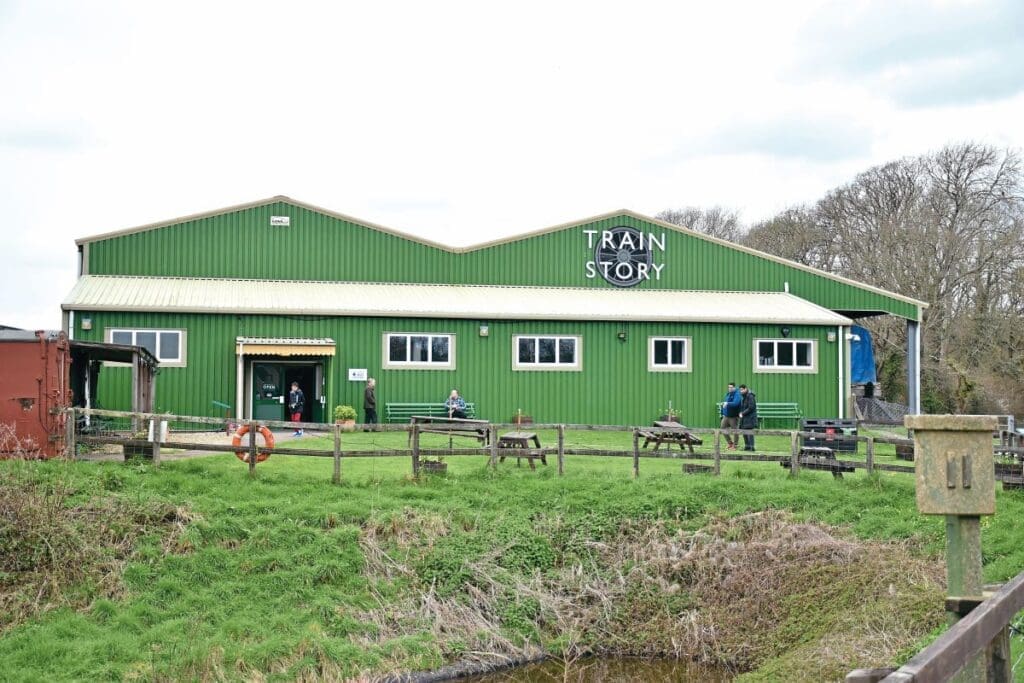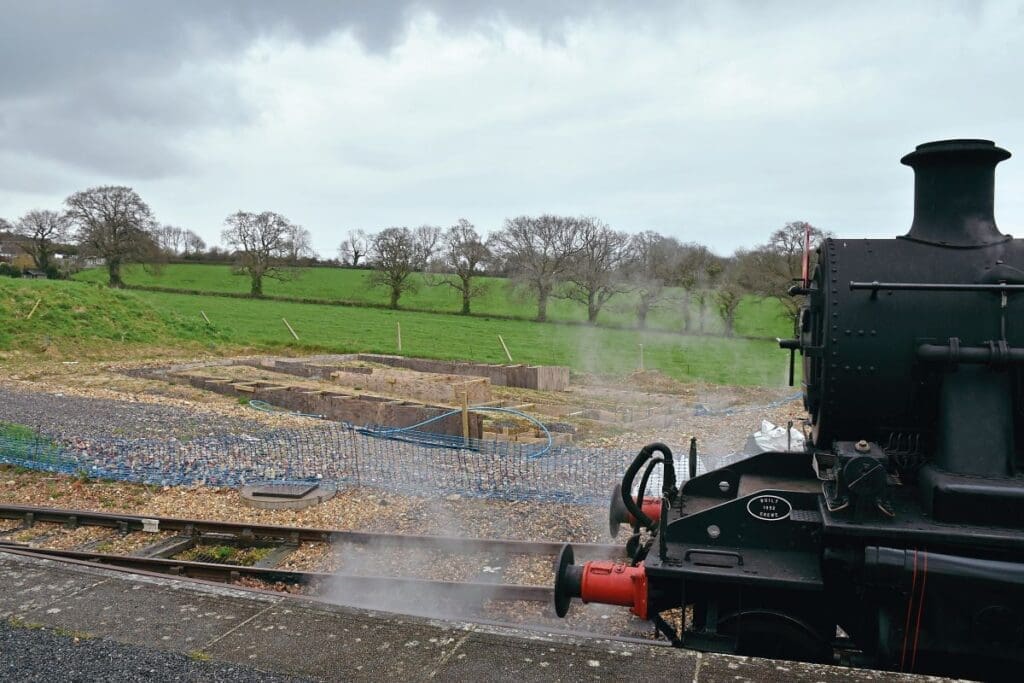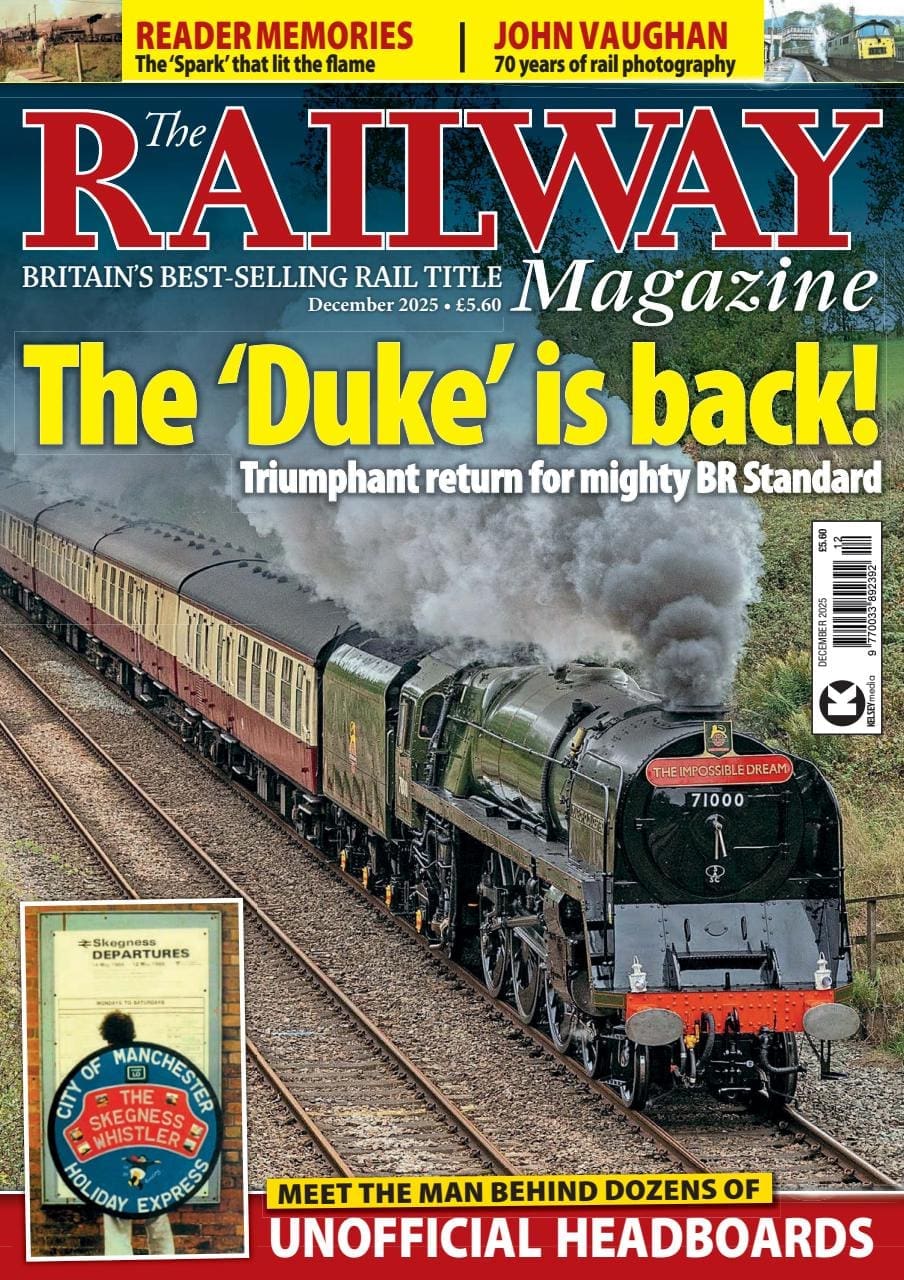After 2023 proved to be a year of record passenger numbers, Owen Hayward sat down with the Isle of Wight Steam Railway’s general manager Marc Huws to talk about how the railway plans to grow further and the challenges of attracting visitors to the island without over-exerting itself, and reports in words and pictures.
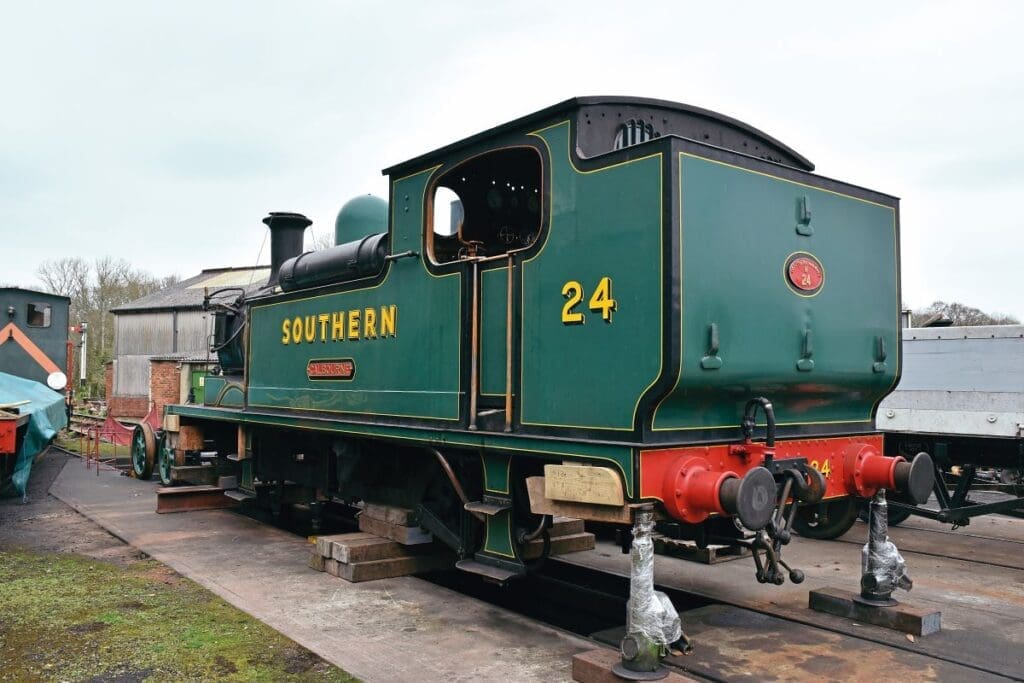
You might think that a railway on an island off the south coast of England, where there are already several other lines competing for visitors, would find it a challenge to attract the numbers it needs.
Yet, in January the Isle of Wight Steam Railway reported a record 130,000 visitors to this 5½-mile line. Its general manager, Marc Huws, thinks that although this is, of course, excellent news in the current economic climate, there is still a bigger market to tap into.
From the history of steam through to 21st century rail transport news, we have titles that cater for all rail enthusiasts. Covering diesels, modelling, steam and modern railways, check out our range of magazines and fantastic subscription offers.
“Our market is very mainstream as it’s visitors to the Isle of Wight,” he said. “Last year was, in theory, actually about 4% up on 2022, though the reality was only 3% because we lost a very busy day during Halloween when we were flooded – and that’s even with having to raise prices. The more people brought to the island, the higher the proportion of those who have come for a day out at an attraction – and that’s the market we really have to appeal to.
“Our Trip Advisor reviews are really good because it’s not just about the locomotives – it’s a day out, it’s the quality of the place. The regular comments are that we are ‘much better’ and ‘much more’ than people expected.
“Isle of Wight tourism is very word-of-mouth, so they’ll go back to their hotels or back home and tell others about their experiences, and guest houses will direct people to us too.
“Fundamentally, we are marketing to people already here. The island is peculiar in that the ferry companies effectively regulate how many people will come based on how expensive it is, affecting the market of the IOW itself.
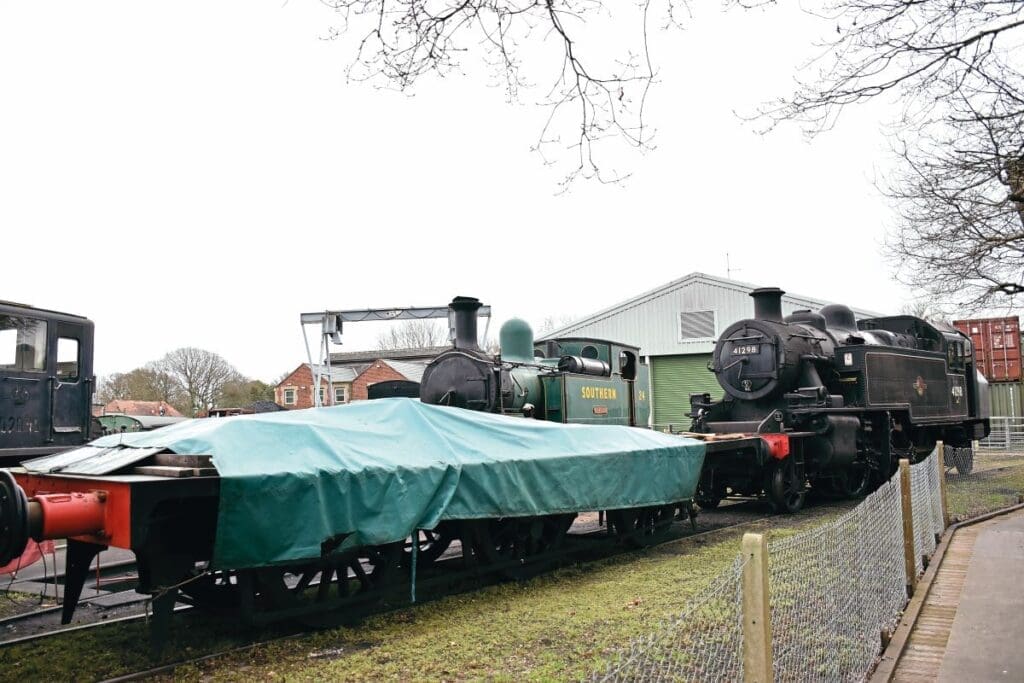
“We are the third-largest visitor attraction on the island in terms of numbers, but perhaps the main thing is we don’t think we’ve anywhere near tapped into the local market.
“The island’s population is about 140,000, so there’s still much to do to encourage the locals to come to us as well. It’s also important as when their friends and family come to stay, we can be a day out for them that they then take away and share again.
“This year we’ve taken on a PR agency to help us with this in part, which will help us identify the areas to focus on and how we reach them.
“What I’d really like is for us to aim for something like Beamish Museum; it’s that overall experience. The train is clearly and absolutely part of it, but we are aiming for that immersive step back in time.
“Havenstreet is a bit like that already. You’re not next to a main A road and you haven’t got a new housing estate next to you. Once you walk in through the booking office, the rest of the world disappears from around you, and we don’t really touch that.
“The whole experience is very much that you can forget where you are, and that’s where we need to keep pushing towards.”
Marc is also well aware that today’s audiences are looking for more than just a train ride and that providing additional activities will benefit the railway further through secondary spend, which, for many lines, is a primary source of income. In the IOWSR, this is rising considerably well, and that ties in to how the railway sells to its audience; the railway aims to hold its visitor numbers steady but drive up secondary spend by encouraging people to remain on-site longer.



Visitors can take advantage of the amenities on offer and the events hosted. Over the winter, a new café and bar building was created at Havenstreet station, adjacent to a large field that is regularly used for birds of prey displays and outdoor events.
“Havenstreet is fortunate as we own this field, which we use as an events space, and it can cater for events into multiple thousands of people,” he says. “We have third party events and concerts here but need to make some improvements. That will be another project for the coming winter, when we’ll put a better structure in for these types of things with improved drainage, lighting, power, water and fibre so we can set things up more professionally. That way it’s always ready for whatever is taking place, and that may then encourage groups and organisations to approach us and ask about using it rather than always us searching for them.
“We also have a partnership with a falconry display group that flies birds at intervals on certain days, which is another attraction to keep people on site, and being right next to our new café means that when the display finishes, people tend to go in there for refreshments. That’s been with us for nine years, but the relationship comes to an end this year and we’ll be looking to replace it with something new and interactive.
“With the island also being one of the few places in the south of the UK where you can see red squirrels, we are also making improvements to our woodland area, and we will be creating a hide as a further activity.
“Some people say that having everything in one place and nothing at either end isn’t good, but actually it’s served us quite well; it’s about striking a balance. There’s no reason to get off at Smallbrook Junction – there’s not enough there and no access by foot or road, so all you can do is wait for a train. Wootton is maybe worse because you can get off or turn up and start a day there. The goods shed recreation project being put up there won’t be enough to make it a destination, but it will provide something to fill the time if you do turn up and have to wait a little while for a train. It’ll be something to do, something to look at, and while it might not last the whole time you have to wait, it will at least give you something to fill the gap. Conversely, we have to be careful not to entice people off the train on a one-train operating day, otherwise they may end up needing to wait an hour and a half for the next service and thus end up frustrated.
“We are well aware of the situation some other railways are in and its always a fear that nobody is ever really that far away from it. You should always act cautiously, as though you’re near it, but don’t let it stop you investing. We’ve just spent £85,000 on the new café because you’ve got to have those amenities and facilities. Over the next three or four years we will probably spend that sort of some again purely on the visitor experience – not heritage or ‘nice things to do’, but things we really should be doing.
“We will maybe install a new playground next year and then refurbish the other café after that. After all, out of a £3-million turnover, what’s £100,000 on something as important as these things? It’s all about scale and context. They will be what keep people on site longer and buying tea, coffee and refreshments from our catering outlets rather than going elsewhere.
“That visitor experience must keep getting better and better because their expectations are rising and rising. They expect things to be pristine – we’re competing against top-quality commercial attractions. We’ll be trying this coming winter to tidy up a lot more of our site.
“In some ways we are probably too tidy – Havenstreet used to have minimal daily passengers back in the 1960s; for us, on some days we’re trying to manage 1000-plus, so the station will never be exactly how it was as we have to make sure it is fit for those numbers, but we try and keep the core part of it in period.
“We’ve improved little details like planters being in barrels as they would have been in the 1960s, or not having an excess of unnecessary signage about.
“One area we are tackling is the Palin fencing that has somewhat taken over Havenstreet, which is nice but not historically correct. In its place we’ll be putting in the original-style post and wire, which is far less visually intrusive.
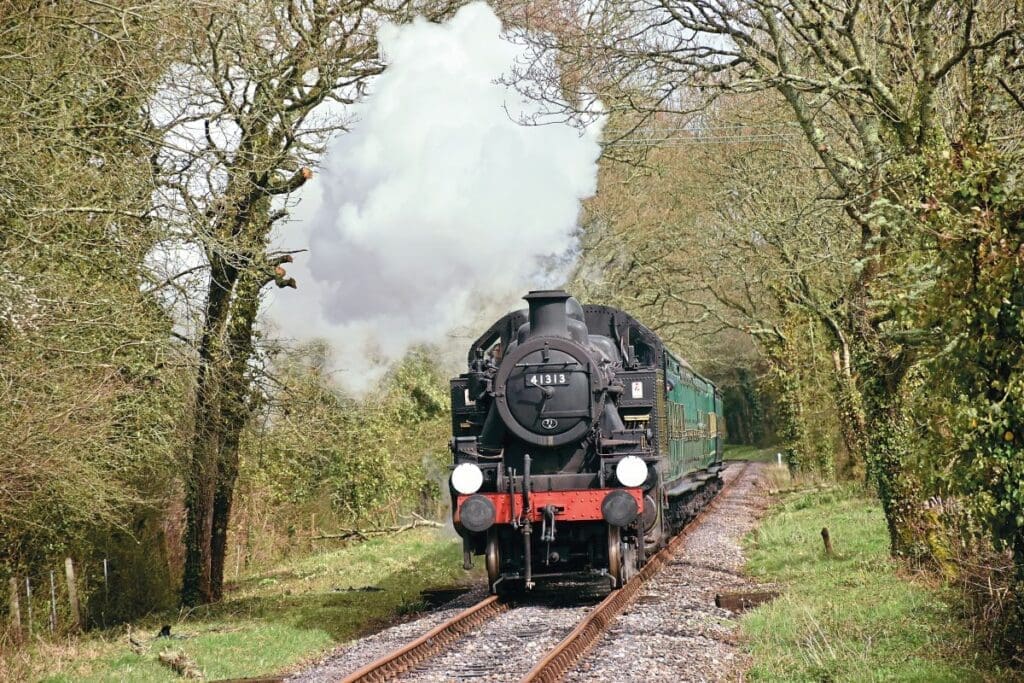
Maintaining the restored
One of the IOWSR’s unique areas is that there is not a Mk.1 carriage in sight – it operates with authentic wooden-bodied bogie and four-wheel rolling stock that makes it stand out from its peers.
Marc is proud that the railway has maintained its fleet well but recognises that some of it is starting to reach the point of needing attention and so plans are in place to tackle this before it becomes an issue, something that comes with a psychological challenge.
“Having spent decades restoring vehicles, we are at that point where we now need to go from restoring stuff to run to actually dismantling something we’d previously completed.
“One of our mantras is to operate and conserve the railway holistically. We don’t run stock and then leave it; we’re not running stuff that is heavily deteriorating – it’s all good to be out there in service. However, we are now reaching that tipping point where a fair number of the original bogie stock hasn’t had a full overhaul since 1966/67, so over the next 15 years we will be looking to complete one a year to ensure they’re good to carry on.
“That could, of course, slow our restoration rate as we’ve sometimes had two or three projects on the go concurrently, with one of those slots now to be taken by a vehicle in this scheme of work, but it is absolutely vital that we balance both overhauls and restorations.”
The railway is fortunate too in having a varied locomotive fleet and it looks to keep as much of this running as possible without sitting inactive for too long.
“Our policy is to not leave locomotives standing around too long between overhauls. We try and roll them through every 12 years, so we’re not doing that common practice of running it for 10 years, leaving it for 10 years, and then bring it back in. It’s more maintenance-based than overhaul-based so we can keep the fleet running, although things have slipped because of Covid-19 and as we try to get out the more powerful locomotives to keep the main services running. We’ve a clear plan in place to get the eight engines back onto a cycle.”
Presently, there are 0-6-0ST Austerities Nos. 192 Waggoner and 198 Royal Engineer and BR Ivatt 2MT No. 41313 in service, with LSWR 0-4-4T O2 No. W24 Calbourne stopped for new tyres to be fitted to the wheels, and is due back into service around July. It currently wears SR Malachite green.
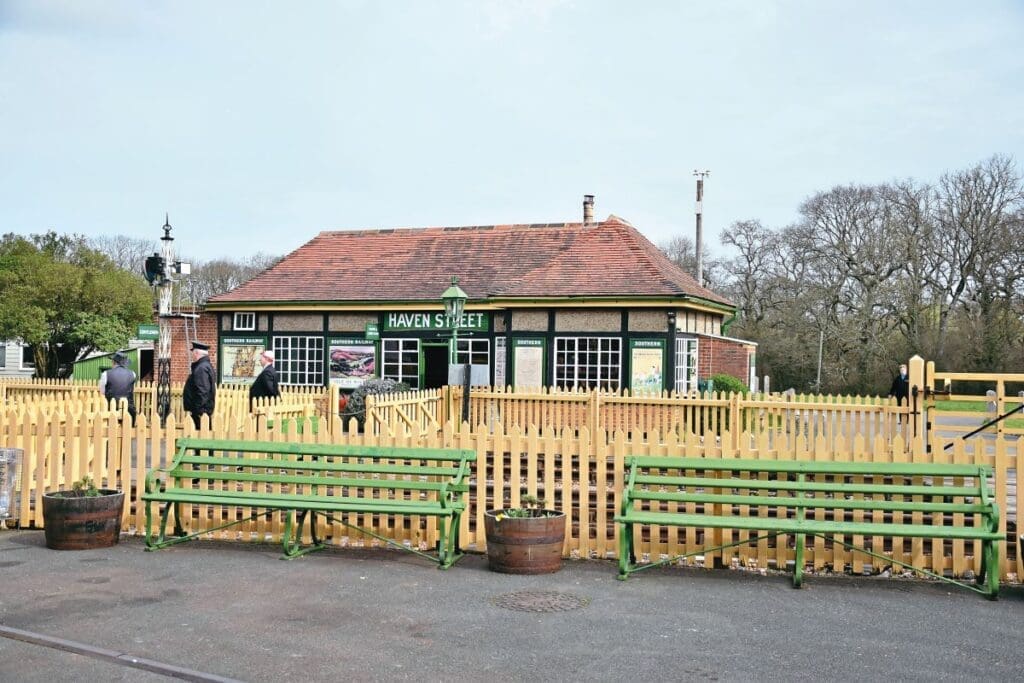
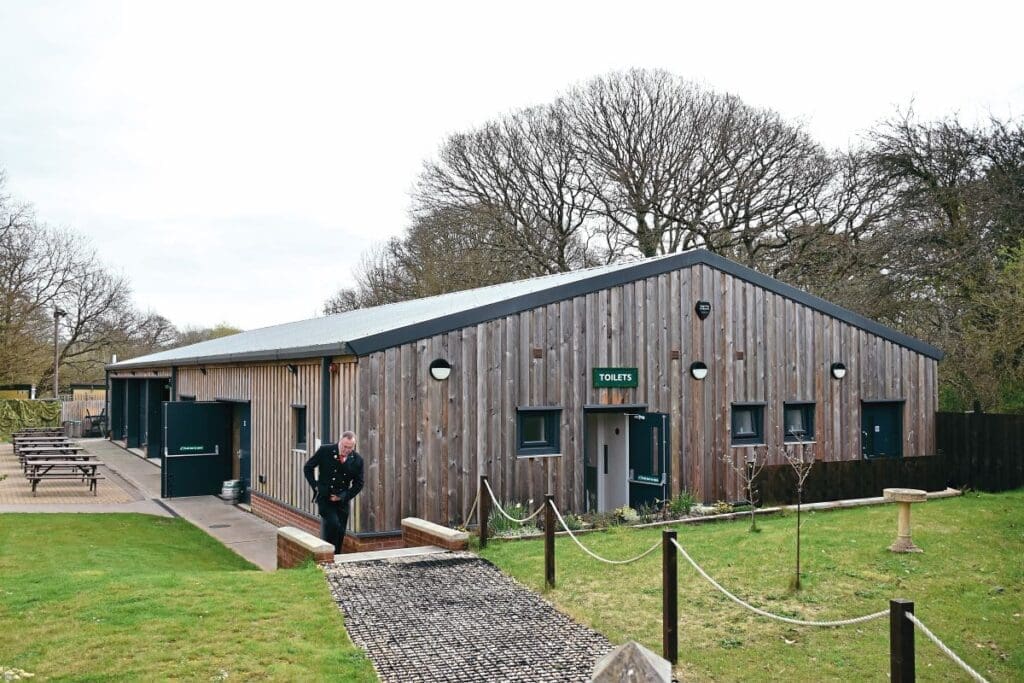
Elsewhere, LBSCR 0-6-0T ‘Terrier’ No. W8 Freshwater is gradually being reassembled having undergone an extensive overhaul, with a target completion date of about September. Newly out-of-ticket classmate No. W11 Newport, however, will have to wait a few years before it goes in for overhaul, with the workshops due to focus on the railway’s second Ivatt No. 41298 and completing the restoration of E1 No. 110 Burgundy (which will assume the identity of W2 Yarmouth).
The boiler for the E1 is being built by boilersmith Israel Newtons and is expected to be ready in the first quarter of 2025, with the rest of the locomotive having been stripped back and returned to ‘as built’ condition, having been modified when a different boiler was fitted some time around the late 1920s to early 1930s after it was acquired by the Cannock and Rugeley Colliery Company.
With the class not known for being a particularly smooth ride – but equally, nobody has driven one since it last steamed in 1997 – Marc admits he’s not entirely sure how it will perform and whether it will cope with modern demands.
“Of the heritage locos, Calbourne is the only one that can manage the heavy peak trains,” he said. “I think, going forward, the strategy will be to put the four historic locos (Terriers, E1 and O2) out on special days to help preserve them better long-term, but also to find and create more specific opportunities around them. This will leave main services to the Austerities and Ivatts, which should manage the heavier trains better, with three of these running and one out for overhaul in rotation.
“It additionally means that when they come out, it is something a bit more special.”
The railway has volunteers who watch auction listings to identify any assets of interest that might help tell its broader transport story, and as a result of this was able to secure the original nameplates and one builders’ plate for its Hunslet Austerity 0-6-0ST No. 3850 Juno, a locomotive which remains an untouched original example of its class and is currently on static display at the Locomotion museum in Shildon.

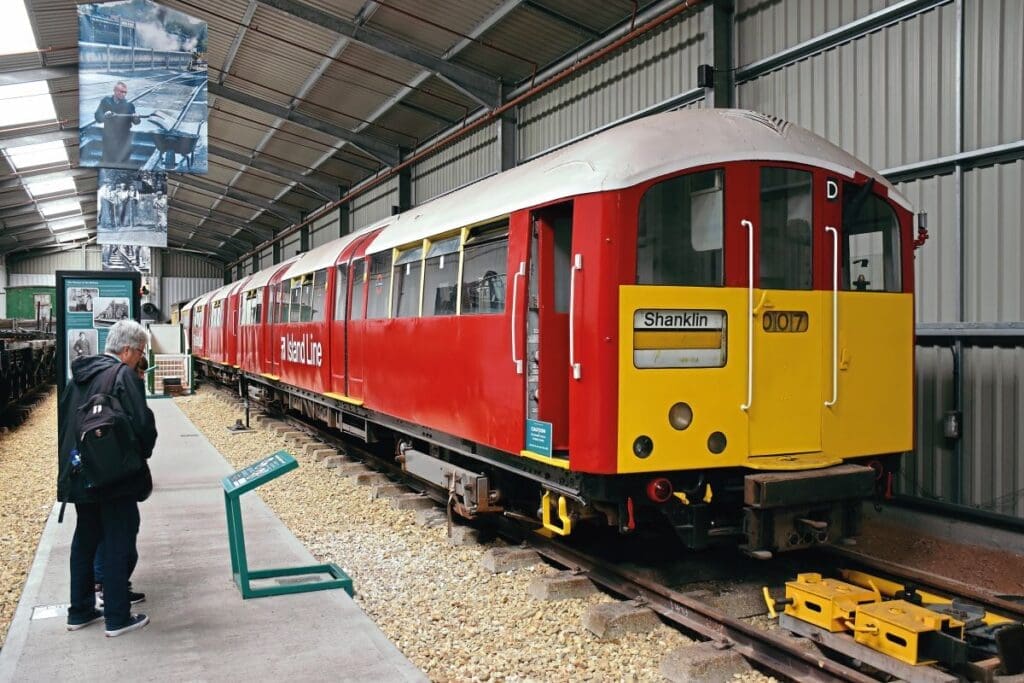
United front
Marc attributes one of the reasons for success on the railway to the fact that there are no internal squabbles. “Nobody here is of the mindset ‘we’re only working on this project’ or ‘we’ll take that engine away’ because we don’t have separate operating and owning companies. We have one board – one company that owns everything. As a result, we have a really strong purpose and control our capital costs. We’re able to look strategically at our capital programme and balance the priorities.”
The new barn café is an example of this, and while already open for business, a formal ceremony will be held on June 7 to include the unveiling of a host of stunning island signage, much of which has not seen the light of day since the 1960s.
At Smallbrook Junction, a recreation of the former signalbox has been erected there, having been built offsite and later transported by train as the site has no road access. Like the café, this will also be opened on June 7, with a little of history returned too.
“When we took the building down to Smallbrook by rail, we invited Lord Peter Hendy, chairman of Network Rail, to see it,” Marc added. “He brought along his friend who turned up with the original sign off the ‘box which hasn’t been seen since 1967, after the railway closed. We are also trying to find the original frame to return to it; it was known to be in the collection at the National Railway Museum at some point, and they are assisting us in trying to locate it now.”
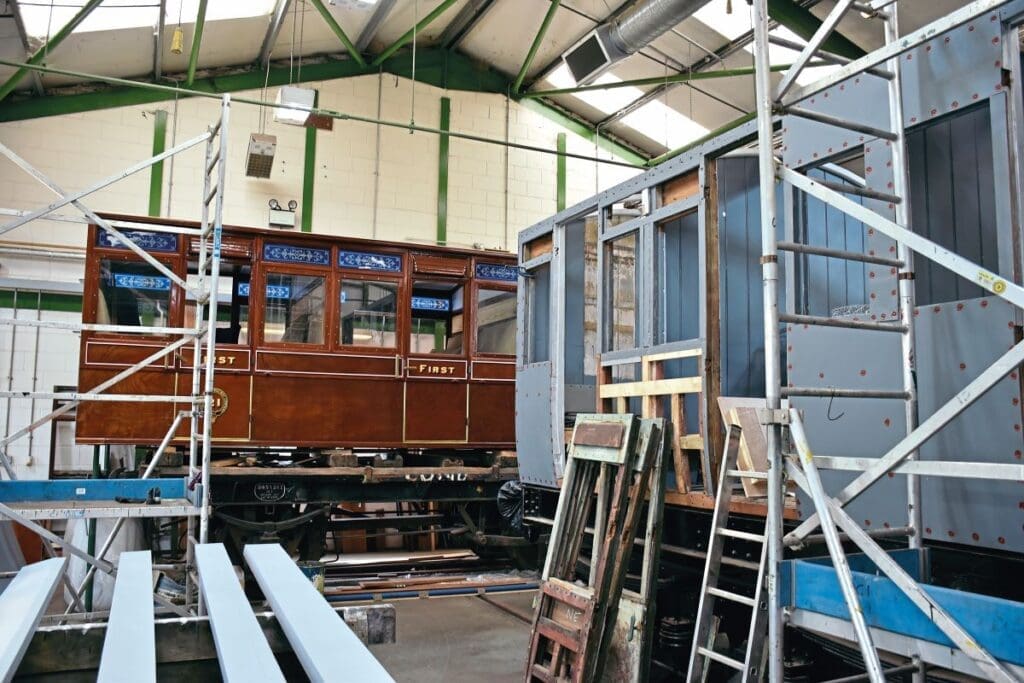
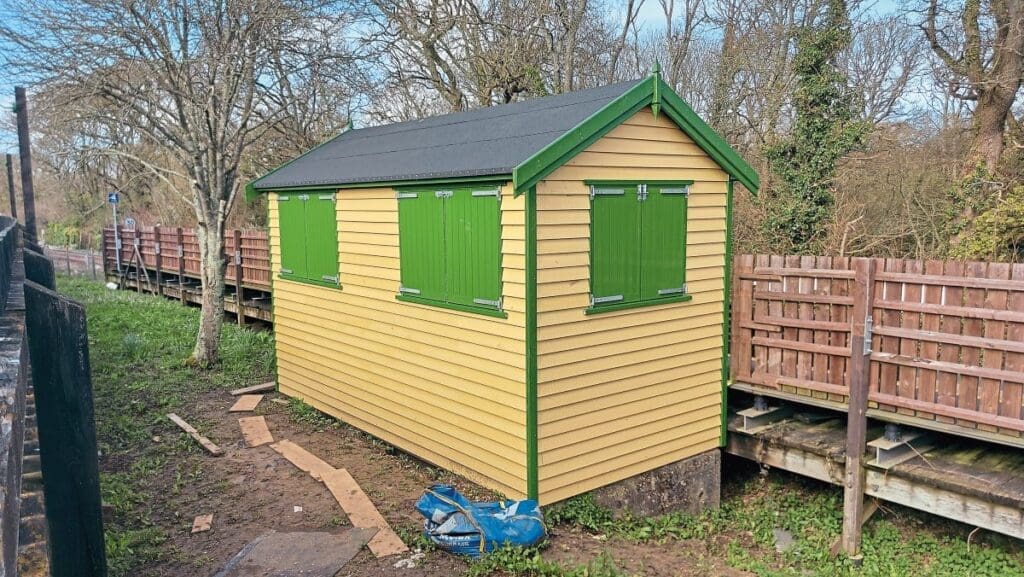
To the future
Looking ahead, Marc is carefully studying the market to identify opportunities that might currently be missed – be it running days with the Ryde Pier tramcar in the off-peak months or developing the events calendar to include offerings (such as concerts at Havenstreet) that take place in the evenings and do not require a substantial investment of labour and finance to turn a profit. “The last trains can often be quiet, so rather than extending service, which can be a challenge as you need to get extra crews, fitters and so on to maintain working hours,” he pointed out.
“Events like our summer proms draw people in who make use of that final round trip and then stay into the evening. It then doesn’t cost us all that much more to lay on, so the upcoming investment in the field will really allow us to explore the opportunities and make best use of it.”
There are also plans to refresh the Train Story museum shed, which, at a decade old, will allow for a little more focus on the story the railway intends to tell. A new three-road shed will also be built alongside to allow more undercover storage of the precious rolling stock and will also prolong its working life.
One thing is absolutely for certain – the future of the railway is certainly bright on the Isle of Wight.
